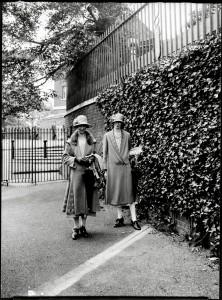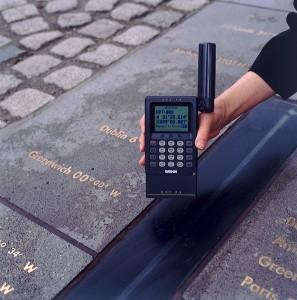Essential Information
| Location |
Royal Observatory
|
|---|---|
21 Aug 2015
In August 2015 a paper was published by scientists in the US explaining why the Prime Meridian at the Royal Observatory Greenwich is 102 metres to the west of the prime meridian used by satellite based navigation and timekeeping, known as the International Reference Meridian or IRM. The paper created quite a stir in the media.

Some news stories suggested that the Prime Meridian had been moved or replaced. Others gave the impression that scientists back in 1850 had put the Prime Meridian in the wrong place. The Prime Meridian isn’t a magic line discovered by scientists. It is an invention. Wherever you build your telescope, that’s where it is. There is no wrong place. The IRM was established alongside the Prime Meridian 31 years ago in 1984, when people stopped using Earth-based telescope technology for navigation and timekeeping and became entirely reliant on space-based satellite technology. This required a different prime meridian, but one which ensured that there was continuity in timekeeping. While astronomy depends on local gravity to determine up and down, satellite technology defines up and down relative to Earth’s centre of gravity, because this is the point that satellites actually orbit. Satellite systems need a prime meridian referencing the centre of the Earth rather than a telescope at the Royal Observatory Greenwich. The position of the IRM was calculated precisely to ensure that the time measured from the Prime Meridian using astronomical methods was exactly the same as time measured from the new meridian using satellite technology. This means the position of the IRM is actually based on the position of the Prime Meridian. We have always been rather proud of the relationship between the IRM and the Prime Meridian. There is a plaque right next to the Meridian Line explaining the relationship between the two. For us it is heartening to know that the Prime Meridian of the World at the Royal Observatory Greenwich is still globally relevant via the IRM.

Today few people use the stars to figure out where they are. They use the GPS capabilities of their phones. It is not surprising that the prime meridian people use in their daily lives is the IRM rather than the astronomical Prime Meridian at the observatory. A smartphone is so much more convenient than a sextant, a chronometer and a copy of the Nautical Almanac. It has been suggested that the IRM should be marked in Greenwich Park, but the IRM is the prime meridian of a space-based coordinate system and is not tied to the surface of the Earth. If you marked the IRM with a line on the ground, the steady drift of the continents would cause the new line to head away from the IRM a rate of 2.5cm a year. The best markers for a moving prime meridian are virtual markers on changeable digital devices. In contrast the Prime Meridian is the basis of an astronomical coordinate system tied to a telescope on the surface of the Earth and marked with a physical Meridian Line. As the continents move the Meridian Line moves with them. While the historic Prime Meridian of the World is significant as the basis of the modern IRM, it is far more significant as the first internationally recognised prime meridian. It represents a watershed moment in the history of navigation and timekeeping, which we celebrate at the Royal Observatory Greenwich alongside other aspects of astronomy, navigation and timekeeping: past, present and future.
This article was written by Rob Edwards, Head of Science Learning at the Royal Observatory Greenwich.